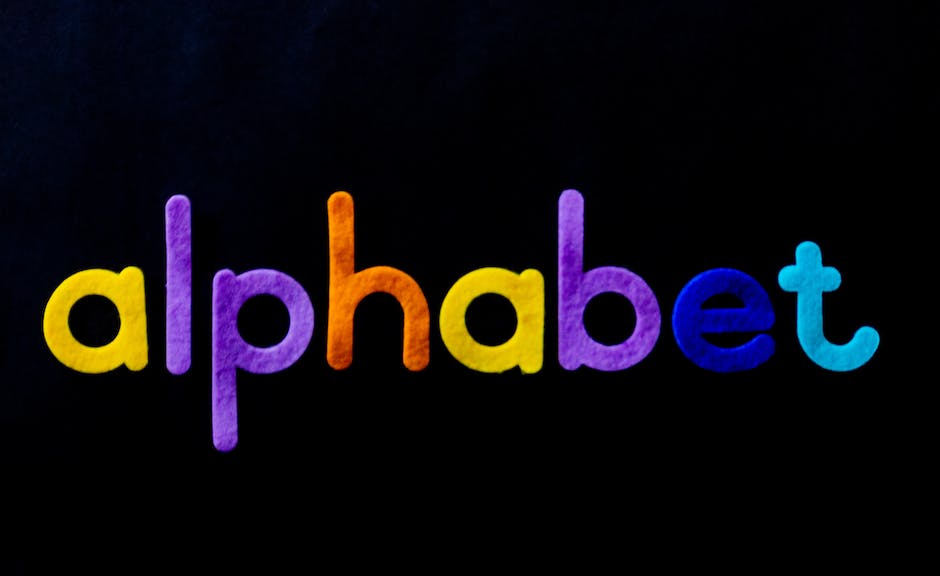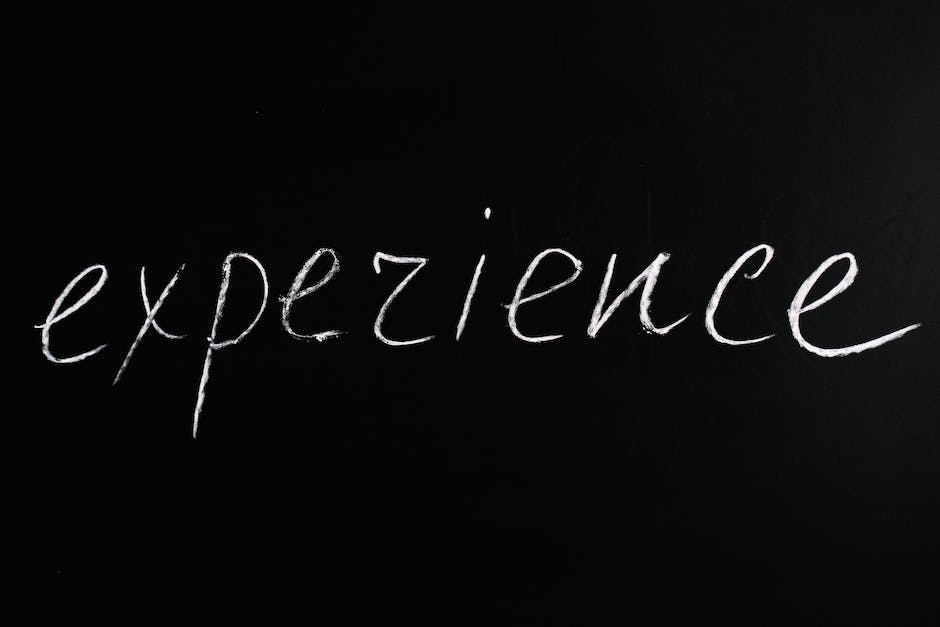Mastering Linking Verbs: An in-depth Guide
In the realm of English grammar, verbs are indeed the powerhouse. They are the words that bring our expressions to life, tying together thoughts and feelings, determining the manner in which we perceive and discuss our surroundings. One such set of verbs, which truly deserve to be in the limelight, are the Linking Verbs. These unnoticed workforces of the English language deserve special mention for their pivotal role in crafting meaningful sentences. Their property of linking the subject to additional information not only gives depth to expressions, but also provides a unique dimension to writing. This comprehensive overview will voyage through the intricate nature of Linking Verbs, their utility, categories, common misinterpretation, misusage, and practical application, making us not just understand but appreciate the importance of Linking Verbs in English.
Fundamental Understanding of Linking Verbs
At the outset, we delve into the fascinating terrain of English linguistics – an area of immense intrigue and potential, where every word and its usage paints a vivid picture of the human capacity for communication and expression. The area under scrutiny in this piece is the category of linking verbs, those silent conduits that bridge isolated words into cohesive thoughts.
Characterised by their purpose, linking verbs essentially connect the subject of a sentence to a subject complement. This subject complement can be viewed as a linguistic device, which either describes or renames the subject at hand. Consequently, linking verbs do not express an action, as action verbs do, nor do they showcase a state of being, as stative verbs do. Instead, they provide a service of unveiling additional details regarding the subject.
One must note that the omnipresent verb “to be” (in its various forms such as ‘is’, ‘are’, ‘was’, ‘were’, etc.) is perhaps the most quintessential instance of this linking verb family – yet, this is only the tip of the iceberg. The English language is copiously rich in variety, and there are numerous other such linking verbs – including but not limited to – ‘seem’, ‘appear’, ‘feel’, ‘become’, ‘look’, ‘stay’, ‘smell’, ‘sound’, ‘taste, ‘grow’ and many more.
Take for instance, the sentence, “The sky looks overcast.” Here, ‘looks’ serves as the linking verb, connecting the subject ‘sky’ to the subject complement ‘overcast’. Note that in such cases, linking verbs themselves don’t convey much meaning but are crucial in maintaining the sentence’s cohesion and semantic completeness.
However, caution must be exercised. The complexity of language makes it such that many linking verbs can also act as action verbs depending on the context. For instance, in the sentence “He smells the flowers”, ‘smells’ is no longer a linking verb but an action verb indicating what ‘he’ is doing. Hence, the context of usage is vital for accurate categorisation.
Finally, to navigate the intricate labyrinth of English linguistics, one must bear the map of grammatical understanding and with that in hand, the realm of linking verbs, is but a milestone in this captivating journey of discovery.
Enjoy the journey, linguists! This realm never ceases to astound with its robust structure and elegant intricacies. Uncover the pleasures of language and continue to quench your thirst for knowledge in the infinite ocean of English linguistics.

Categories of Linking Verbs
Delving deeper into the realm of English linguistics, we now turn to the fascinating subject of linking verb classification. Though we have previously discussed various examples of linking verbs and their function, this exploration allows us a closer look at how these verbs are categorised. The broad bifurcation of linking verbs is into two types: ‘true’ linking verbs and ‘pseudo’ or ‘ambiguous’ linking verbs. This classification unfurls the versatile ways in which English language can be constructed and interpreted.
‘True’ linking verbs, as per their unassuming appellation, embody the definitive essence of linking verbs. They primarily function as the conduit between the subject and its complement. No action is portrayed through these verbs; rather, they exist to associate the subject with a state or condition. Central to this category is the aforementioned versatile verb ‘to be’, along with its variants such as ‘is’, ‘am’, ‘are’, ‘was’, ‘were’, ‘appear’, ‘seem’, ‘become’, ‘grow’, ‘look’, ‘feel’, ‘smell’, ‘taste’, ‘sound’, and ‘remain’. These verbs highlight a state of being, a transformation, or a sensory perception and etch definitive imprints in English linguistics.
However, language, much like life, thrives on ambiguity and so we find the ‘pseudo’ linking verbs. These are called thusly since they can function either as linking verbs or action verbs, depending on the context of the sentence. Verbs including ‘prove’, ‘turn’, ‘go’, ‘get’, ‘keep’, ‘run’, ‘stand’, ‘fall’, and ‘stay’, among others, are classified under this category. These verbs inject a dynamic element into the sentence structure, where the verb might link a subject to its complement in one instance, and describe an action in another.
Consider the example of the verb ‘run’ used in two different instances. In the sentence “She runs a marathon”, ‘run’ acts as an action verb describing a physical action performed by the subject. In contrast, “The meeting runs smoothly” employs ‘run’ as a linking verb, providing a description of the state of the meeting.
This nuanced understanding of linking verb classification is paramount for developing a profound comprehension of English linguistics. Not only does it enhance the accuracy and precision of language use, but also provides intriguing insights into the flexibility and adaptability of the English language. This exploration lays solid groundwork for further investigations into the complex universe of linguistic understanding.

The Utility of Linking Verbs
Delving further into the indispensable contributions of linking verbs to the English language, their classification aids tremendously in grasping their roles. Crucially, we delineate between true linking verbs and pseudo linking verbs, expanding our understanding of linguistic intricacies.
Notably, true linking verbs include ‘be’, ‘seem’, ‘appear’, ‘become’, ‘feel’, ‘taste’, ‘smell’, ‘sound’, and ‘look’. These verbs act purely as connectors, providing no direct action on the subject but linking it to extra information about its state or condition. ‘The soup smells delicious’, for example, does not involve the soup performing any action but simply describes its characteristic.
In juxtaposition, pseudo linking verbs, encompassing ‘grow’, ‘prove’, ‘turn’, ‘stay’, ‘fall’, ‘go’, ‘run’, ‘drive’, ‘ride’, et cetera, can function as both action verbs and linking verbs, dependent entirely on their use within the context. This fluidity results in a heightened potential for ambiguity, validating the necessity for keen comic understanding when contending with pseudo linking verbs.
By predilection, consider the sentence ‘Our teammates ran tired’. In this instance, ‘ran’ is a pseudo linking verb connecting the subject ‘teammates’ with the complement ‘tired’. Compare this to ‘Our teammates ran the relay race’, where ‘ran’ evolves into an action verb detailing the subject’s activity. Such subtleties epitomise the complexity of English linguistics, underlining the importance of comprehensive grammatical understanding.
Grasping the classification of linking verbs positively impacts language accuracy and precision, particularly in formal settings. Accuracy involves the correct usage of verbs, wherein understanding their classifications becomes critical. On the other hand, precision concerns the delivery of clear and concise messages, for which discerning the nuances of verb types is pivotal.
Moreover, the versatility and adaptability of the English language are underscored by the variable functions of pseudo linking verbs. This flexibility allows for an expressive and nuanced language that can mould to diverse contexts, audiences, and purposes.
Further explorations into the labyrinth of linguistics continue to reveal the indispensability of linking verbs. While the field remains intricate and vast, each piece of understanding, such as linking verbs’ classification, contributes significantly to the overall puzzle. Indeed, for language enthusiasts and scholars, every linguistic insight opens up a world of knowledge and potential for further exploration.
In closing, one must recognise that English grammar, with its labyrinthine structures and conventions, provides the very foundation upon which we communicate, analyse, and express. Central to this are linking verbs, exemplars of grammatical complexity and utility. However, we must remember that these facets represent only one element of the vibrant, dynamic mosaic that is language understanding. The onus rests on us to persist in our pursuit of linguistic knowledge, to further unravel the elaborate tapestry that language so stunningly weaves. The calling is not for faint-hearted but for those driven by an insatiable curiosity and a passion for understanding English linguistics.

Misinterpretation and Misusage of Linking Verbs
Avoiding Pitfalls in Linking Verb Usage
Despite having touched upon the significance of linking verbs, their classification, and the ambiguity introduced by the existence of pseudo-linking verbs, it proves paramount to bring attention to potential pitfalls in the usage of these crucial grammatical components. Knowledge is only powerful when applied correctly; hence, let us navigate these often overlooked aspects in the domain of English linguistics.
An often recurring pitfall corresponds to the overuse of certain linking verbs. Specifically, the overreliance on the versatile verb “to be,” used excessively, tends to render prose lifeless and tedious. While undoubtedly owes to its functionality, curbing its usage can often lead to more engaging and dynamic sentences. For instance, “The cake is delicious” could instead be, “The cake tastes delicious,” showcasing the potential utilization of other linking verbs.
Furthermore, with pseudo-linking verbs, the problem of ambiguity presents an obstacle. Since these verbs can act both as linking and action verbs, the risk of muddling the meaning of a sentence is a real concern. For example, consider the verb ‘appear’. A sentence like “Tom appears tired” depicts ‘appears’ as a linking verb. In contrast, in, “Tom appears on the stage“, ‘appears’ acts as an action verb. Thus, caution needs exercising to ensure one does not cause unwanted confusion.
Still more, it is crucial always to match the proper subject complement with the utilized linking verb. An adjective or noun must follow true linking verbs, and adjectives should follow sensory linking verbs. Unclear or wrong pairings can lead to sentences that, while grammatically correct, confound rather than clarify.
Likewise, the act of replacing linking verbs with action verbs, when done inappropriately, can lead to awkward sentence constructions that might alter the intended meaning. For example, substituting ‘becomes’ with ‘gets’ in, “She becomes tired” changes the tone to potentially informal or colloquial, i.e., “She gets tired”, something to avoid in formal discourse.
Knowledge of these subtleties and potential misunderstandings is not just an academic exercise but contributes significantly to the precision and efficacy of communication. Greater intricacies lie forgotten outside the spotlight of common linguistic instruction, providing a challenging yet rewarding avenue for exploration. This knowledge promotes clarity in delivering the desired message, thus reinforcing the essence of language – being a conduit for articulate expression. Despite the complexity and adaptability that accompanies English linguistics, it remains a fascinating realm overrun with possibilities that tease at the lifelong pursuit of knowledge.

Practical Application of Linking Verbs
In the realm of usage and application, the maxim “knowledge is power” prevails. Comprehension of linking verb complexities facilitates sagacious decision-making in linguistic scenarios which is crucial for succinct and accurate communication.
The usage of the verb “to be” is often gratuitous, especially in written discourse. It is recommended to seek viable alternatives to potentially overused linking verbs to enhance the dynamism and rhythm of the text. For instance, the sentence “The sky is blue” could be elegantly rephrased as “The sky dons a blue cloak”.
Pseudo linking verbs introduce an element of linguistic ambiguity. For example, the verb ‘appear’ can function as both a linking and action verb depending on the context. ‘He appears tired’ employs ‘appear’ as a linking verb, whereas ‘He appears on stage’ utilises it as an action verb. Dexterity in distinguishing between these nuanced uses can bring clarity and coherence into communication.
Notably, linking verbs and subject complements must form a symbiotic relationship. A misuse here can distort message intentionality and confuse the recipient. For example, the sentence “She seems intelligent” is correct, whereas “She seems intelligently” is awry. Harmonising linking verbs with appropriate subject complements solidifies argument credibility and advances clear communication.
Reformulating sentences to replace linking verbs with action verbs is a method that can occasionally lead to clunky text. For example, altering “She looks happy” to “She exhibits happiness” may seem superfluous and somewhat forced. While this technique may introduce variety, discretion should be employed to maintain the desired tone and flow.
Therefore, mastery of these potential pitfalls in linguistic navigation is crucial for maintaining the fabric of effective communication. An unwavering dedication to understanding and applying language rules and patterns underpins linguistic proficiency.
Boxed within these pearls of language, wisdom lies the potential for more profound explorations and discoveries. Just as a jeweller examines each facet of a precious gem, so must we delve into the continuum of linguistic nuance to further hone our language skills, and in turn, our communication efficacy.

Emerging from this insightful journey of understanding Linking Verbs, we now possess an advanced knowledge of these grammatical anchors linking the subject to the rest of the sentence. Not only are we equipped to recognise and categorise linking verbs accurately, but we also discern their misinterpretation and misusage. The vitality of Linking Verbs in our daily conversations, in both written and spoken form, has been underscored along with their indisputable role in enriching our expressions. The practical application exercises have provided a firm base, paving the way for us to apply and recognise these verbs in multiple contexts. This essential knowledge of Linking Verbs surely strengthens our foundation in English grammar, as we realise that mastering the subtle yet complex art of using Linking Verbs paves the way for effective communication.
Discover Writio, the ultimate AI content writer! This article was brilliantly authored by Writio.
